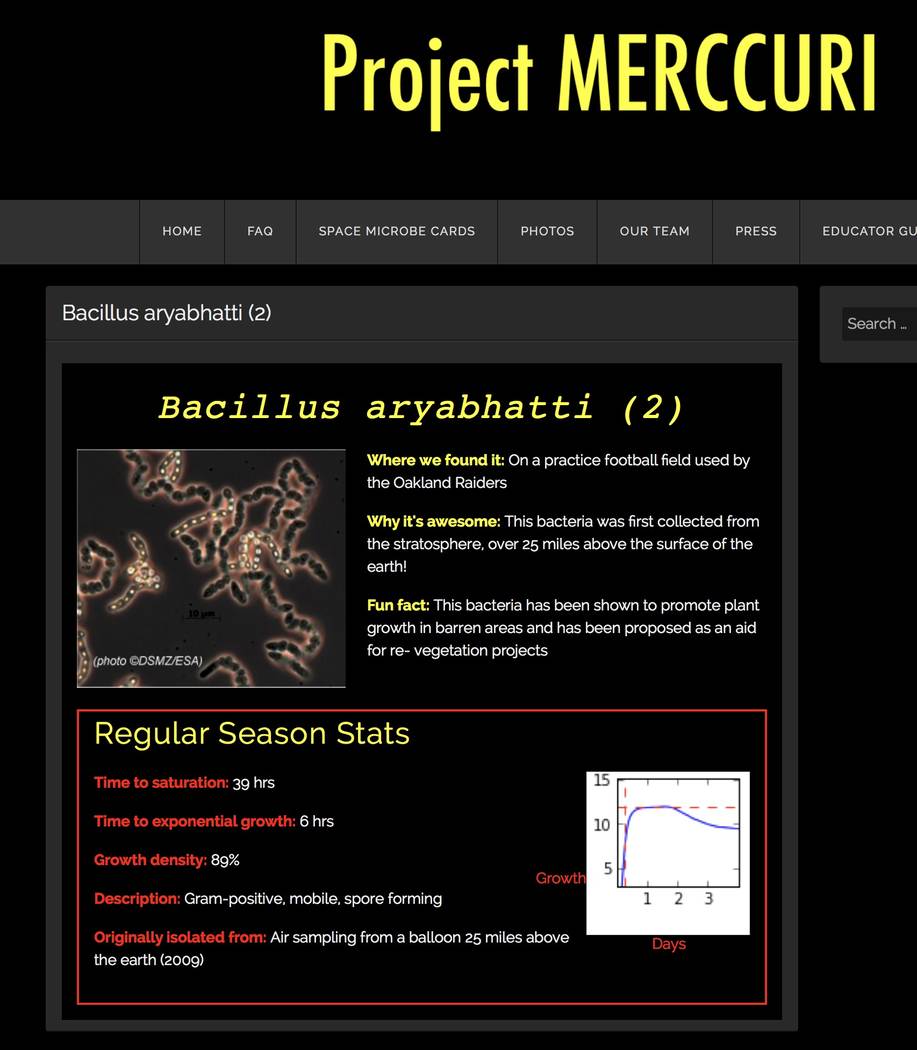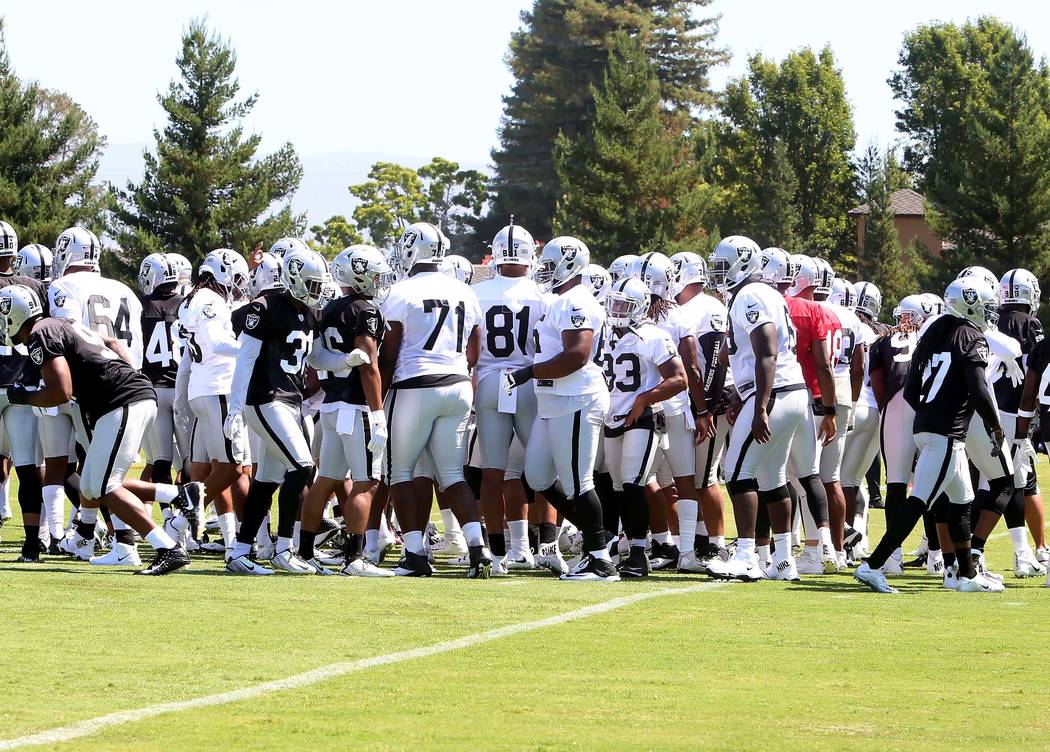Raiders practice field germs thrive on International Space Station



Microbes from a practice football field used by the Oakland Raiders hitched a ride on the International Space Station.
Bacillus aryabhatti was among samples collected in 2014 as part of the citizen science program Project MERCCURI. The initiative, conceived by a group of National Football League and National Basketball Association cheerleaders who are also scientists and engineers, involved swabbing down dozens of professional sports stadiums, identifying the microbes in the samples, and sending those species to the ISS to see whether they would thrive.
For the record, the bacillus aryabhatti grew fastest.
It turns out thousands of species have colonized the International Space Station – and only one of them is Homo sapiens.
According to a new study in the journal PeerJ, the interior surfaces of the 17-year-old, 250-mile-high, airtight space station harbor at least 1,000 and perhaps more than 4,000 microbe species – a finding that is actually “reassuring,” according to co-author David Coil.
“Diversity is generally associated with a healthy ecosystem,” said the University of California at Davis microbiologist. A varied population of microscopic inhabitants is probably a signature of a healthy spacecraft, he added. And as humanity considers even longer ventures in space – such as an 18-month voyage to Mars – scientists must understand who these microbes are.
The UC Davis scientists who partnered on the project asked the ISS astronauts to swab down the space station and return the samples to Earth. Seems like a fair trade.
The samples were taken from 15 sites on the station, including the audio terminal unit microphone, air vents, the tab used to close the privacy panel on the crew sleep compartment. These locations broadly correspond to places found in a terrestrial home – the audio terminal unit is like a telephone; the air vents, which suck up dust and debris, are similar to doorsills where dust bunnies gather; the privacy panel tab vaguely resembles the knob on the door to your bedroom.
The microbe samples were packaged and flown to Earth, where the scientists at UC Davis sequenced their genomes. In each sample, they identified between 1,036 and 4,294 operational taxonomic units – a biological measure used to classify closely related organisms that roughly reflects the number of species. Then they compared what they found with results from surveys of the microbiomes of humans and their homes.
The study revealed no “Andromeda Strains” that threaten the astronauts’ well-being; the ISS was dominated by human-associated microbes, particularly the kind that dwell on skin. (Then again, the sequencing technique the scientists used can only identify species that are already known, so the study doesn’t rule out the extremely unlikely possibility of something alien up there.)
“Honestly, I wasn’t very surprised at all by the findings,” said microbiologist Jenna Lang, the study’s first author. Because all the equipment that goes into space is thoroughly sterilized, any germs that colonize the space station must hitch a ride on an astronaut.
“I fully expected the ISS surfaces to look like human skin and … upper airway, which it, for the most part, did,” Lang said.
The main difference was in the species’ relative abundance. For example, the ISS harbors more Staphylococcus than a typical home. But Lang cautioned that this study is based on a relatively small number of samples, all taken at a single point in time. When the crew of the ISS changes, it’s likely the station’s microbes will change, too.
It’s important to keep tabs on what germs are circulating up there, Coil said. An unhealthy microbiome on the ISS could quickly lead to unhealthy astronauts. He noted that by the time the Russian space station Mir was decommissioned, it stank with fumes from black mold that flourished behind panels and inside air conditioning equipment. Some researchers even worried that Mir’s microbes might have mutated into a biohazard when the space station returned to Earth in 2001 (Spoiler: Everything was fine).
“Now the questions are a little more nuanced,” Coil said. ” Microbiome science has advanced quite a lot.” Scientists want to know what happens to the good microbes in astronauts, including the gut bacteria that help with digestion, and how those critters will interact with the microbiome of the space around them.
“There’s a lot of much bigger studies going on now asking these bigger questions,” Coil said. ” Ours is more of a preliminary piece of data.”
You’re surrounded by a cloud of bacteria as unique as a fingerprint.












